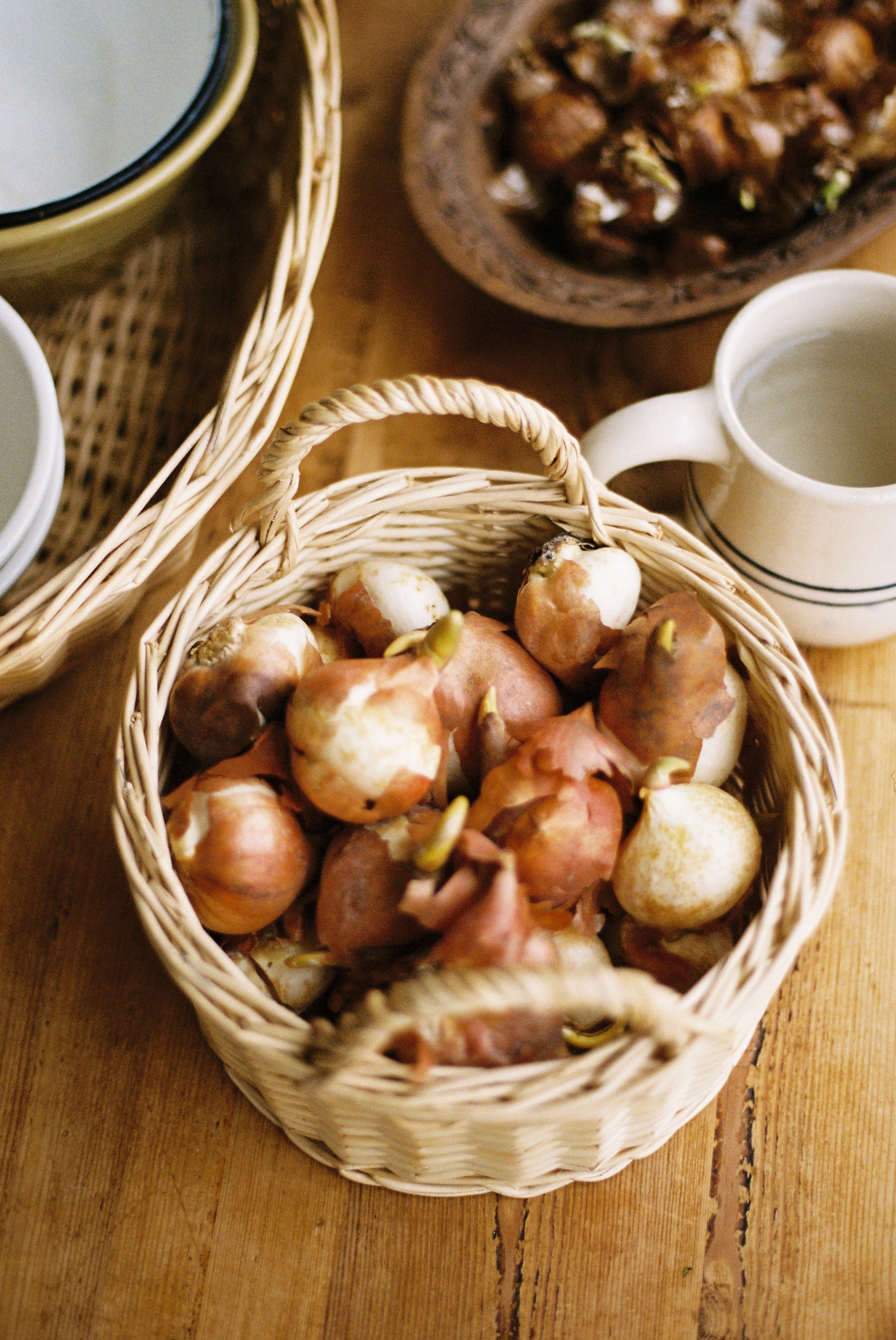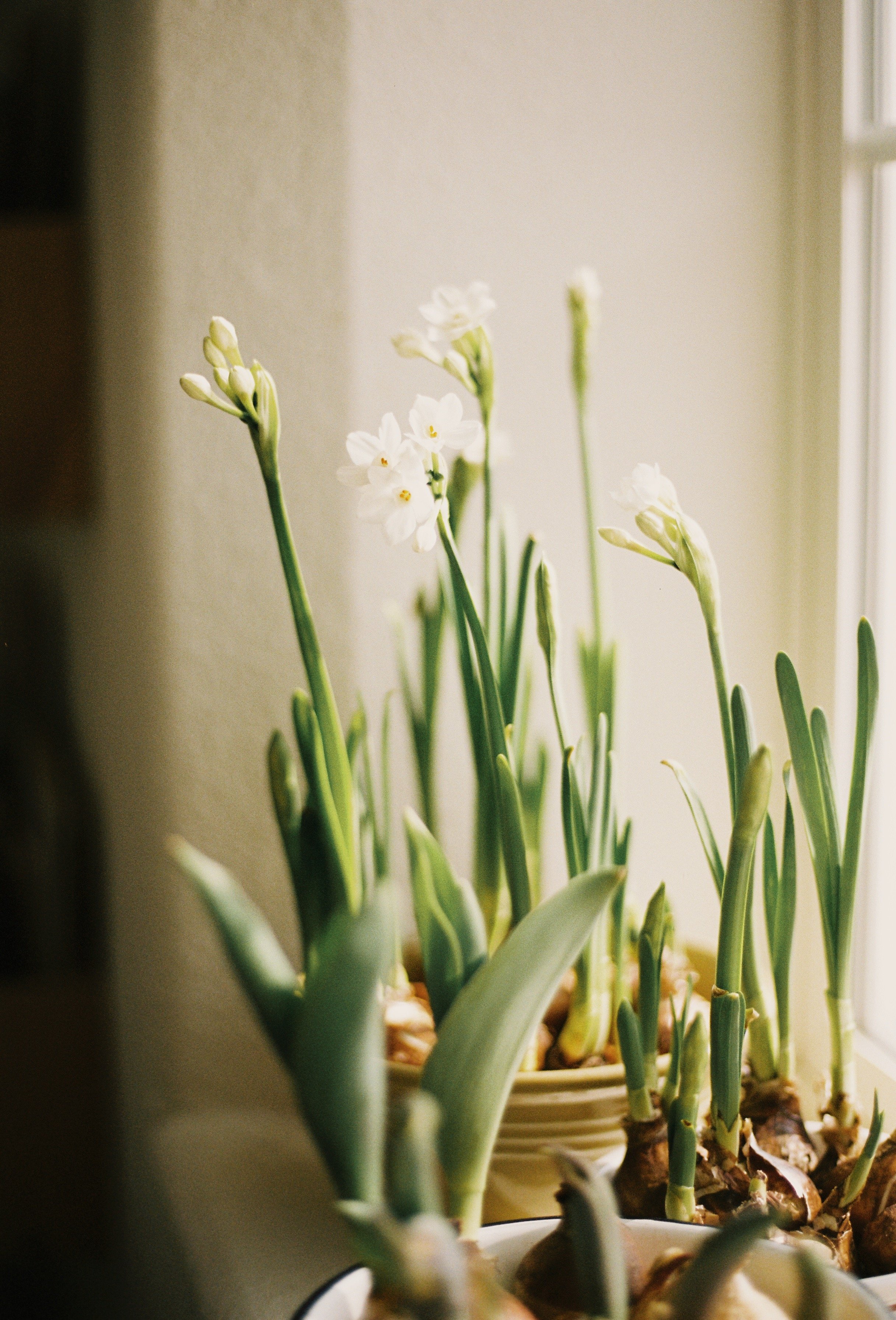
Waiting
LESSON 3
Children explore the process of planting bulbs through a story and engage in hands-on activities to prepare bulbs and branches for growth.
The book “Planting a Rainbow” by Lois Ehlert
Flower bulbs and/or branch clippings from a flowering tree.
Clear cup or container for planting
Marbles, stones, pebbles, or potting soil
Water
Materials
Purchase bulbs from a garden center or online (remember to purchase pre-chilled so that they will bloom).
Gather materials
Preparations
Facilitate reflection on the previous lesson by posing open-ended questions.
Guide discussion on real-life spring preparations.
Lead a discussion to deepen student comprehension of plant growth and development.
Provide clear instructions and support for hands-on activities.
Offer guidance and encouragement as needed to ensure positive learning experiences.
Objectives for Teachers
Children recall activities they enjoyed from the previous lesson.
Children identify signs of spring that may be hidden or unseen.
Children discuss plant needs and growth processes after reading the story.
Children engage in hands-on learning by preparing bulbs and/or branches for growth, promoting observation skills and scientific exploration.
Objectives for Children

Collect and Connect
Practice singing the poem “Spring is Coming” with the actions you came up with.
Spring is Coming
Spring is coming, spring is coming,
Birdies build your nests,
Weave together straw and feathers,
Doing each your best.
Spring is coming, spring is coming,
Flowers are coming too,
Pansies, lilies, daffodillies,
Now are coming through.
Spring is coming, spring is coming,
All around is fair,
Shimmer, glimmer, on the meadow,
Joy is everywhere!

Activity Flow
Begin this activity reflecting on the previous lesson. You could ask the following questions:
What was your favorite rock you painted?
What do you remember about “The Story of the Root Children”?
What were some of the things the root children did to get ready for Spring?
2. Ask your child if they enjoy waiting for things. Waiting can often be challenging, requiring patience. It’s something we practice often, even as grown-ups. It's an important skill we develop. Nature shows us that being patient is worth the wait.
3. Introduce today's story, "Planting a Rainbow" by Lois Ehlert. As we read, we'll explore the process of planting bulbs or seeds for flowers to grow and discuss what flowers need to be able to grow. Read the story together to learn how bulbs and seeds grow.
4. After the story, talk with your child about what bulbs and seeds need to grow. Let them know that while we wait for spring to arrive, we'll start a fun experiment to bring color and life into our home by forcing bulbs or branches to blossom. Today, they'll prepare the bulbs and/or branches, and in the coming weeks, they'll observe their growth and blooming. This will take patience, and waiting, but the end result is worth it. In our household it is a fun tradition we like to do each year as we wait for spring to arrive.
Forcing Bulbs
Fill a container about 3/4 full of rocks, marbles, pebbles, or potting soil. You may want to use a clear container with stones to observe the roots growing.
Place the bulb(s) on top, ensuring the root side is facing down into the container.
Add water to the container until it just barely covers the bottom of the bulb.
Put the container in a sunny window.
Keep an eye on the bulb each day and observe what happens. Remember to add water to the container as needed when the water level decreases.
Forcing Branch Blossoms:
Choose healthy branches from a flowering tree, preferably ones with buds that are just beginning to swell but have not yet opened.
With clean pruning shears, make a diagonal cut at the base of each branch.
Fill a clean vase or container with lukewarm water, enough to submerge the bottom of the branch cuttings.
Place the branch clippings in the vase.
Position the vase in a cool location away from direct sunlight initially, such as a windowsill in a cool room.
Check the water level daily and replenish it as needed to ensure the ends of the branches remain submerged.
After a few days, move the vase to a brighter location with indirect sunlight to encourage the buds to open.
Continue to monitor the branches daily as the buds begin to swell and eventually open into blossoms.




